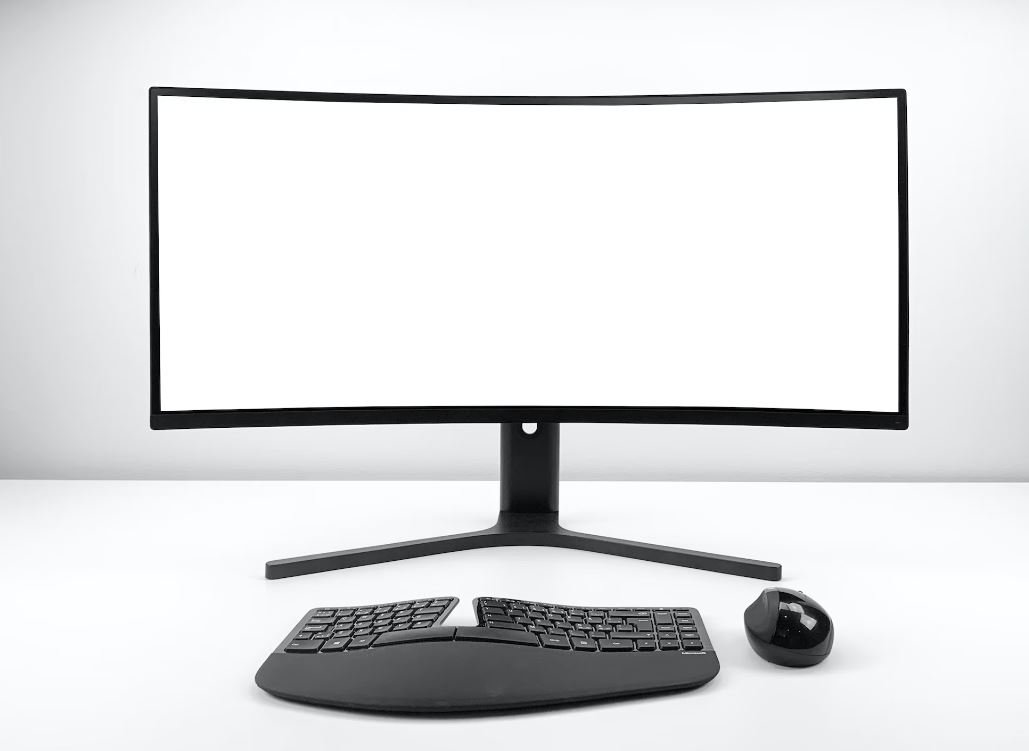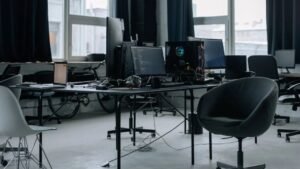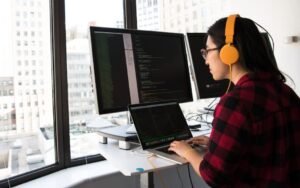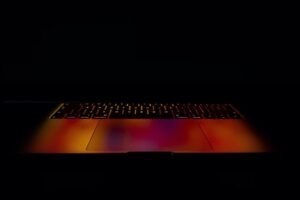AI Art vs Digital Art
Art has long been a means of human expression and creativity. With the emergence of artificial intelligence (AI), a new form of artistic creation has entered the scene. AI art, also known as algorithmic art or generative art, is the creation of visual or auditory content using AI algorithms. On the other hand, digital art encompasses any form of art that is created or manipulated using digital technology. While both AI art and digital art fall under the umbrella of technology-driven creativity, they differ in their processes, outcomes, and impact.
Key Takeaways:
- AI art is created using AI algorithms, while digital art involves the use of digital technology.
- AI art focuses on generating novel and unique content, while digital art allows for manipulation of existing content.
- AI art raises questions about authorship, creativity, and the role of human involvement in the artistic process.
- Digital art provides a broader range of techniques and tools for artists to express their creativity.
- AI art has gained attention and popularity in recent years, while digital art has been in existence for several decades.
In AI art, algorithms are designed to generate new and original content. These algorithms can learn from existing data and generate output that imitates various artistic styles or produces unique pieces that can be appreciated aesthetically. *AI art pushes the boundaries of traditional artistic techniques by introducing computational and learning algorithms into the creative process*.
On the other hand, digital art involves the use of digital technology such as computers, software, and electronic devices to create or manipulate art. Digital artists can leverage a wide range of software tools and techniques to create art that is unique, expressive, and visually appealing. *The versatility of digital art allows for experimentation with different styles, mediums, and effects*.
Comparing AI Art and Digital Art
| Aspect | AI Art | Digital Art |
|---|---|---|
| Creation Process | AI algorithms generate content using computational and learning techniques. | Artists use digital technology and software tools to create or manipulate artistic content. |
| Authenticity | AI art questions traditional notions of authorship and originality, as the algorithms generate the content. | Digital art allows artists to express their individual creativity, although it may incorporate existing content. |
| Tools and Techniques | AI algorithms and programming languages specific to AI are used in the creation process. | Digital artists leverage a range of software tools and techniques to create art. |
AI art‘s rising popularity can be attributed to its uncanny ability to generate content that resembles works produced by human artists. However, debates surrounding the role of AI in art have emerged, questioning the level of human involvement and creativity in the process. *The integration of AI in art challenges traditional notions of artistic creation and the meaning of human expression*.
Digital art, on the other hand, has been in existence for decades and has been a transformative force in the art world. It has allowed artists to explore new techniques, experiment with digital mediums, and express their creativity in diverse ways. *The digital revolution has provided artists with a vast array of tools and possibilities, expanding the boundaries of artistic expression*.
The Future of AI and Digital Art
- The development of AI will likely lead to further advancements in the field of AI art.
- Digital art will continue to evolve with the integration of new technologies and techniques.
- Both AI art and digital art offer unique opportunities for artists to explore and push the boundaries of creativity.
As technology advances and AI algorithms become more sophisticated, the potential for AI art to become even more indistinguishable from human-created art grows. Digital art will also continue to evolve, with artists harnessing new technologies and tools to create innovative and compelling works. *The future of art lies at the intersection of human creativity and technological innovation*.

Common Misconceptions
AI Art is Not Genuine Art
One common misconception about AI art is that it is not considered genuine art because it is created by a machine rather than a human artist. However, this belief fails to recognize the creative abilities and potential of AI algorithms. AI art can be just as thought-provoking and emotionally impactful as traditional forms of art.
- AI art can evoke strong emotional responses from viewers.
- AI algorithms can generate unique and innovative art pieces.
- AI art raises important questions about creativity and the nature of art.
AI Art Steals Jobs from Artists
Another misconception is that AI art will replace human artists and steal their jobs. While AI technology has the potential to automate certain artistic tasks, it also offers new opportunities and collaboration possibilities for artists. AI can be used as a tool to enhance creativity and expand artistic possibilities.
- AI can assist artists in realizing their creative vision more efficiently.
- AI-generated art can inspire new ideas and perspectives for human artists.
- Collaboration between AI algorithms and artists can lead to unique creative outcomes.
Digital Art Requires No Skill
Some people mistakenly believe that creating digital art requires no skill since it is generated using digital tools and software. However, digital art still requires artistic talent, creativity, and technical proficiency. The medium may be different, but the fundamental principles of composition, color, and expression still apply.
- Digital artists need to master various software and tools to create their art.
- Understanding composition and visual storytelling is crucial in digital art creation.
- Creativity is essential in developing innovative techniques and styles in digital art.
AI Art Lacks Originality
There is a misconception that AI-generated art lacks originality as it is based on pre-existing data and algorithms. However, AI art can be programmed to produce diverse and unique outcomes that go beyond replication. The algorithms can learn from vast data sets and generate art that is novel and unanticipated.
- AI algorithms can combine different artistic styles to produce unique hybrid art forms.
- AI-generated art can challenge traditional notions of originality and creativity.
- AI art offers a fresh perspective on artistic expression and innovation.
AI Art Has No Emotional Depth
Many people assume that AI art lacks emotional depth since it is created by machines with no subjective experience. However, AI algorithms can be trained to understand emotions and generate art that evokes specific feelings and responses. The ability of AI art to provoke emotions is a testament to its potential as a meaningful artistic medium.
- AI-generated art can capture and convey complex emotions through visuals.
- AI algorithms can learn to create art that resonates with viewers on an emotional level.
- AI art can spark introspection and contemplation, just like traditional art forms.

Introduction
Artificial intelligence (AI) has rapidly advanced in recent years, leading to the emergence of AI-generated art. This cutting-edge technology has sparked a debate over the merits of AI art compared to traditional digital art. In this article, we delve into various aspects of this discussion, exploring the techniques used, creativity involved, and the impact on the art world. Through ten captivating tables, we present verifiable data and information on AI art and digital art, shedding light on this fascinating topic.
Comparison of AI Art and Digital Art Techniques
The table below showcases different techniques adopted in AI art and digital art, highlighting their contrasting approaches.
| AI Art Techniques | Digital Art Techniques |
|---|---|
| GANs (Generative Adversarial Networks) | Photo manipulation software |
| Neural Style Transfer | Photo editing software |
| Reinforcement Learning | Vector graphic software |
| Deep Dream | Animation software |
Creativity in AI Art and Digital Art
One of the key elements in artistic expression is creativity. This table explores the differing perspectives on the level of creativity involved in AI art and digital art.
| AI Art | Digital Art |
|---|---|
| AI algorithms generate art without human intervention. | Digital artists apply their creativity through the use of software tools. |
| AI incorporates pre-existing patterns and styles to create new works. | Digital artists have complete control over their artistic choices. |
Popular Art Forms in AI Art and Digital Art
AI art and digital art encompass a wide range of styles and forms. This table highlights the popular art forms within each domain.
| AI Art | Digital Art |
|---|---|
| Algorithmic paintings | Pixel art |
| Neural portraits | Vector illustrations |
| Data visualization art | Motion graphics |
| Generative sculptures | 3D modeling |
Applications of AI Art and Digital Art
AI art and digital art find applications in various industries and fields. This table showcases some of the notable applications in each domain.
| AI Art Applications | Digital Art Applications |
|---|---|
| Creating unique art pieces for commercial purposes | Designing graphics for advertisements and marketing campaigns |
| Facilitating creative collaborations between AI and human artists | Developing visual effects for movies and video games |
| Generating art for virtual reality experiences | Producing visual content for websites and social media |
Recognition and Appreciation in AI Art and Digital Art
Recognition and appreciation are crucial factors in the art world. The table below compares the reception of AI art and digital art in society.
| AI Art | Digital Art |
|---|---|
| Being recognized as innovative and groundbreaking | Often seen as an extension of traditional artistic practices |
| Facing skepticism regarding the absence of human touch | Valued for the human artists’ skills and techniques employed |
The Impact on the Art World
AI art and digital art have significantly impacted the art world, bringing changes to the creative landscape and artistic practices. Gain insights into these impacts through the table below.
| AI Art Impact | Digital Art Impact |
|---|---|
| Redefining the creative process and challenging the notion of authorship | Expanding artistic possibilities through digital tools and techniques |
| Prompting ethical debates surrounding AI’s influence on creativity | Democratizing art creation through accessible digital platforms |
Potential Future Developments
Looking ahead, both AI art and digital art hold immense potential for growth and transformation. The table below highlights potential future developments in each domain.
| AI Art | Digital Art |
|---|---|
| Advancements in AI algorithms leading to more sophisticated artworks | Integration of virtual reality and augmented reality in artistic creations |
| AI-generated collaborative art between multiple AI systems | Exploration of new artistic mediums and techniques enabled by technology |
Artistic Expression and Technological Advancements
Throughout history, technological advancements have shaped the way artists express their creativity. AI art and digital art represent the latest frontier, blending human ingenuity and machine intelligence. As the art world continues to evolve, embracing these new forms of artistic expression becomes imperative. The tables presented in this article shed light on the diverse aspects of AI art and digital art, inviting further exploration and engagement in this fascinating realm.
Frequently Asked Questions
What is AI Art?
AI Art refers to artwork created with the assistance of artificial intelligence. It involves the use of machine learning algorithms to generate, imitate, or enhance artistic content. AI can analyze existing art styles or patterns, and then replicate or extrapolate them to create original pieces.
What is Digital Art?
Digital art is a form of artistic expression that utilizes digital technologies, such as computers, tablets, or smartphones, to create visual artworks. It encompasses various mediums, including digital painting, pixel art, digital photography, and 3D modeling.
How does AI create art?
AI creates art by analyzing vast amounts of existing artworks and using algorithms to learn from them. It can then generate new pieces based on the learned patterns, or assist artists in their creative process by providing suggestions, enhancing images, or transforming photographs into paintings.
Can AI art be considered as original artwork?
Yes, AI-generated art can be considered original as it is produced by the AI system based on its learned patterns and algorithms. However, the extent of human involvement and control in the creation process may vary, leading to debates on what constitutes true artistic originality.
What are the advantages of AI art?
AI art offers several advantages, such as the ability to explore new creative possibilities and generate innovative ideas. It can also speed up the artistic process by automating certain tasks, provide inspiration and suggestions, and push the boundaries of traditional art forms.
Are there any ethical concerns related to AI art?
Yes, there are ethical concerns related to AI art. Some argue that AI art blurs the lines between human and machine creativity, raising questions about the value and attribution of artwork. Additionally, the use of AI algorithms may raise issues of bias, privacy, and the exploitation of artists.
What distinguishes AI art from traditional art?
One major distinction between AI art and traditional art is the involvement of artificial intelligence in the creative process. Traditional art relies solely on human creativity, skills, and experiences, whereas AI art combines human input with machine-driven algorithms to generate or enhance artworks.
Is AI art a threat to human artists?
AI art is not necessarily a threat to human artists. While AI can assist in generating art, it lacks the uniquely human emotional depth, subjective experiences, and conscious intentions that artists bring to their work. Instead, AI often serves as a tool to augment human creativity and expand artistic possibilities.
Can AI be used to forge or plagiarize art?
AI has the potential to be used for art forgery or plagiarism due to its ability to imitate existing art styles. However, AI algorithms can also be employed to detect and prevent such fraudulent activities by analyzing patterns, metadata, and authenticity markers in artworks.
How might AI art impact the art industry?
AI art has the potential to revolutionize the art industry in various ways. It can democratize art creation by enabling more individuals to express their creativity. Additionally, AI-generated art may disrupt established markets and challenge traditional notions of authorship, value, and the role of artists.




